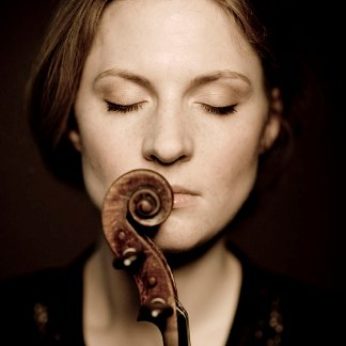Composer: Béla Bartók (b. 1881 - d. 1945)
Performance date: 29/06/2012
Venue: Bantry Library
Composition Year: 1921
Duration: 00:34:23
Recording Engineer: Anton Timoney, RTÉ lyric fm
Instrumentation: vn, pf
Instrumentation Category:Duo
Artists:
Tanja Becker-Bender -
[violin]
Péter Nagy -
[piano]

The
pace of post-war political change in Hungary was relentless.
Following the break-up of the Austro-Hungarian Empire the years
1918-19 saw a liberal government, toppled by a communist revolution,
displaced by a rightist counter-revolution, culminating in the
reinstatement of the Kingdom of Hungary under the military commander
turned elected regent Miklós Horthy.
After
all these political upheavals Bartók was left with a simple teaching
role at the Budapest Academy of Music. His ethnomusicological work
did not chime with the nationalistic turn of Horthy’s regime and he
faced mounting criticism in the press for his appreciation of enemy
Romanian musics. The work of his kindred composers Kodaly and
Dohnányi
at
the Academy was also continuously under threat, and their
musicianship frequently derided in the popular press. Bartók turned
to extensive musicological writing, composition, and foreign tours in
order to escape the bitter witch-hunts of domestic politics and the
stifling tedium of pedagogy and the institution.
The
Sonata was composed in 1921 and dedicated to the violinist Jelly
Arányi. Bartók and Arányi first performed the work at a private
recital in London organised by the Hungarian chargé
d’affaires.
Arányi’s diplomatic connections eased their access to London’s
chamber music circles and the following public recital at Aeolian
Hall was met with rapturous reception. Bartók was startled by the
response, declaring in a subsequent interview; At
the end of my violin sonata, I was surprised, and almost confused, by
the waves of applause rising up to the platform from an English
audience which is generally described as cold and reserved.
The
tumultuousness of the work may have as much to do with Bartóks own
stylistic quandary as with the unsettling political climate. This was
a period when he published his thoughts on composition frequently,
striving to negotiate a space between serialism and the folk music of
his country. In his 1920 article, The
Problem of New Music,
he describes the previously
undreamt-of wealth of transitory nuances now at our disposal. The
First Violin Sonata is emblematic of this fascination with transitory
nuance, which can be heard at the thematic, tonal, and rhythmic
levels.
The
Allegro
Appassionato
opens with an intoxicating tension between the instruments, the
violin’s restless melodies blowing across the surface of the piano’s
choppy angular progressions. The instruments reflect each other’s
disquiet, their conversation taking an ever more frenzied tone.
We are
relieved by a muted middle section that is gently brooding, replete
with languid tempo changes and mysterious connotations. The return to
the primary tempo brings a sense of violent rupture that fades to a
high meandering violin melody accompanied by cascading piano
passages. The following sections bombard us with continuous
juxtapositions of the brooding and the violent, the tempos of the
tranquil and the agitated, compounding our disorientation. Yet it is
through such vivid contrast that our ears focus on the tiniest
details, allowing us to share with the musicians, as Adorno described
it, a
degree of concentration that is almost out of this world.
The
Adagio
opens
with an extended passage for solo violin that is insular and
contemplative. The piano’s entry firmly sets the impressionistic tone
of the movement, providing an even, glassy backdrop against which the
wavering thoughts and sentiments of the violin are reflected and
amplified.
The
Allegro
is
a relentless helter-skelter of accelerations and decelerations, its
opening breakneck theme the refrain that punctuates the ensuing wild
extrapolations. We are led through an astonishing array of
instrumental effects and metrical modulations, the tempo changing
almost every phrase, to the turbulent conclusion of a movement that
is truly an epic lattice of contrasts.
Copyright © 2025 West Cork Music. All rights reserved.
Designed and developed by Matrix Internet